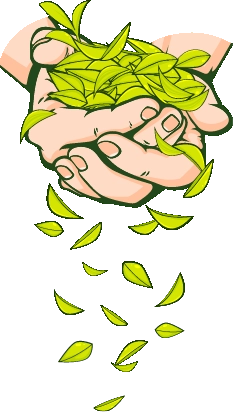Wisdom of Sages : Holistic Health and Well-being – Plants and Herbs
As one of the earliest cradles of civilization, India has a rich heritage of timeless knowledge and wisdom. Emanating from the ageless Vedas (knowledge), the Vedanta philosophy and the Vedic way of life were central ancient Indians. The sages of India not only respected and revered nature, but also studied it scientifically. The wisdom of sages of ancient India was unmatched. From astronomy to Ayurveda, from literature to linguistics and from mathematics to metallurgy to medicine, Indian sages were highly advanced in their understanding of life.
Holistic health and well-being were of utmost importance, and living a productive and meaningful life of 100 years was a key goal. The sages of ancient India developed Ayurveda – the world’s first holistic system of medicines comprising of predictive, preventive and personalized medicines using medicinal plants, herbs and spices.
Mention in Ancient Texts
Besides the four main Vedas, Ayurveda is the main Upveda (an ancillary Veda, of the Atharva Veda) that details use of medicinal plants and herbs. Between 400 BCE – 200 CE, the main texts that form the essence of Ayurveda were compiled. The Charak Samhita, complied by the sage Charak around 400 BCE – 200B CE is considered to be the world’s first book on internal medicine. Charak Samhita describes human anatomy, blood circulation embryology, pharmacology, etc. It lists diseases and ailments we now know as diabetes, tuberculosis, blood pressure as well as cardio-vascular and neurological issues. Importantly, the Charak Samhita also mentions numerous medicinal plants used in Ayurveda.
The Vedas have a mention of over 1000 plants and herbs for medicinal uses. The Charaka Samhita talks about 341 plant-generated medicines, while the Sushruta Samhita (world’s first compendium on surgery complied by sage Sushruta around 600 BCE – 400 BCE) discusses 385 plant-based medicines. From roots to stems to leaves to bark to seeds to flowers and fruits, medicinally useful parts of plants were used as powders, juices, gels, pastes, decoctions and pellets.
The timeless wisdom and knowledge of plants and herbs of the sages of ancient India has made India the #1 country in natural plant-based health and wellness. According to a World Health Organization, around 400 families of flowering medicinal plants have been studied till now, of which 315 families are found in India.
Top 10 Plants and Herbs for Holistic Health and Wellness
Based on their usage in various formulations to treat a variety of diseases, disorders and ailments, we list the top 10 plants and herbs that are immensely beneficial in every day wellness.
Ashwagandha (Withania somnifera)
Also known as Indian ginseng or winter-cherry, Ashwaganda (smell of horse), extract and powder of the plant’s roots are used.
Benefits :
- Classified adaptogen – helps the body manage stress and anxiety
- Can reduce blood sugar – by increasing insulin secretion and sensivity
- May reduce inflammation
- Can help in lowering cholesterol
Giloy (Tinospora Cordifolia)
Giloy (also known as Guduchi) is amongst the most revered plants in Ayurveda. It is also known as Amrit (the nectar of immortality). Giloy is a creeper vine that is grown widely across homes in India. The mature stem of the plant is where the maximum health benefits are stores. The easiest use of Giloy is to boil stems and extract the juice. Today, Giloy is also available as powder and capsules forms.
Benefits :
- Powerful immunity booster – due to high amounts of antioxidants
- Home-cure for fever
- Improves digestion, known to cure hyperacidity and worm infections
- Can help in treatment of diabetes
- Helps fight rheumatoid arthritis and some liver disorders
- Reduces ageing
Please read our dedicated blog on Giloy : The Secret of Eternal Youth of Angels.
Licorice (Glycyrrhiza Glabra)
Literally meaning “sweet root”, Licorice is said to be 50 times sweeter than refined sugar. Also known locally as mulethi or jesthimadhu, the roots of licorice plant have been used for their antioxidant, antimicrobial, anti-inflammatory, analgesic and hepatoprotective properties.
Benefits :
- Boosts immunity – anti-viral and anti-inflammatory compounds protect against bacterial and fungal infections
- Highly effective for sore throat, coughs and breathing difficulties
- Revitaliser – relieves fatigue
- Normalises hormonal balance
- Heals ulcers and wounds
Manjistha (Rubia Cordifolia)
In Sanskrit, Manjistha means ‘bright red’. Commonly known as the Indian madder, the stems and roots of this climber are blood red in color. In ancient India, Manjistha was also used for coloring and dyeing fabric and other articles with a deep red color.
As a medicinal plant, Manjistha’s most important usage is in purifying blood and improving blood circulation as a powerful lymph cleanser. By draining wastes and toxins from the blood, Manjistha removes blockages and stagnation throughout the circulatory system.
Benefits :
- Purifies bloods and improves overall blood circulation
- Boosts immunity
- Healthier skin – helps in curing skin allergies, eczema and dermatitis
- Reduces wrinkles and keeps skin youthful
- Healthier Liver and Kidneys
- Aids digestion
Moringa (Moringa Oleifera)
Also known as Shigru in Sanksrit, Moringa is more commonly known as the drumstick tree. Today, Moringa is fast getting recognized globally as a superfood for its immensely nutritious properties and health benefits. Referred to as the Miracle Tree or Mother’s Best Friend due to high content of vitamins A, B and C, iron, calcium, potassium and amino acids, Moringa also has 46 antioxidants. Almost the entire plant can be used : leaves, pods and stems. In India, using fresh Moringa leaves and pods in soups and vegetables is common. Moringa leaves contain the maximum amount of nutrition and health benefits. These can be shade dried and crushed to make a powder, and added to tea, soups and other dishes.
Benefits :
- Boosts overall health and immunity
- Reduces inflammation
- Can reduce blood sugar and helps fight diabetes
- May reduce liver damage and prevent kidney stones
(Disclaimer : The Indian medicine system is based on the age-old Ayurveda. Research is going around the world to study these plants in more depth and scientifically prove their benefits. This blog only presents the current information as a general guide for the readers, who are advised to check with their physicians or qualified natural health practitioners before incorporating any of the above in their routine, especially if they are under medication.)

Tea is a religion in the art of life.

